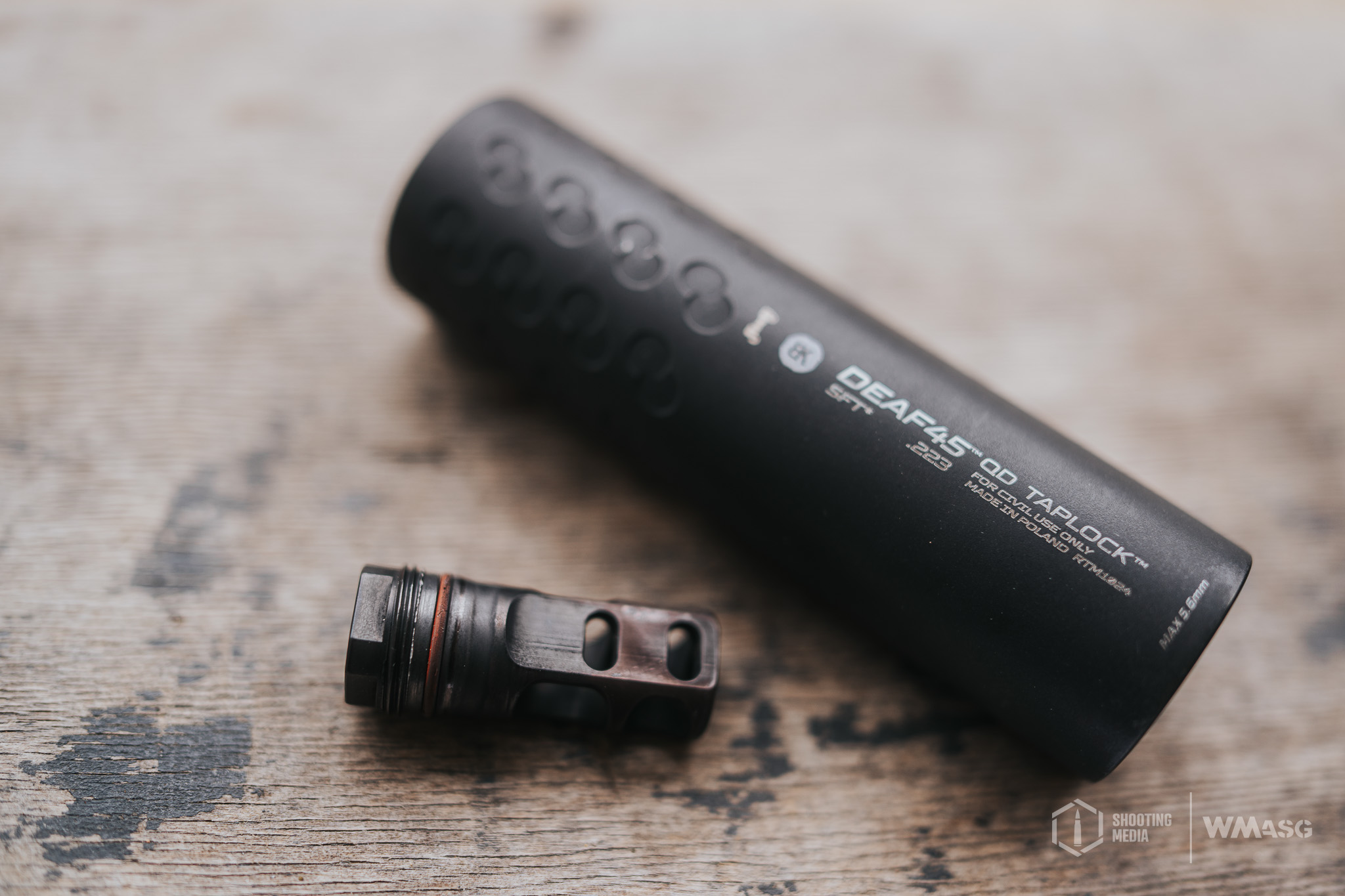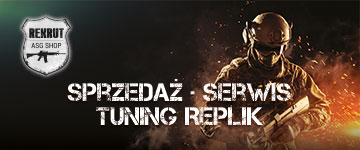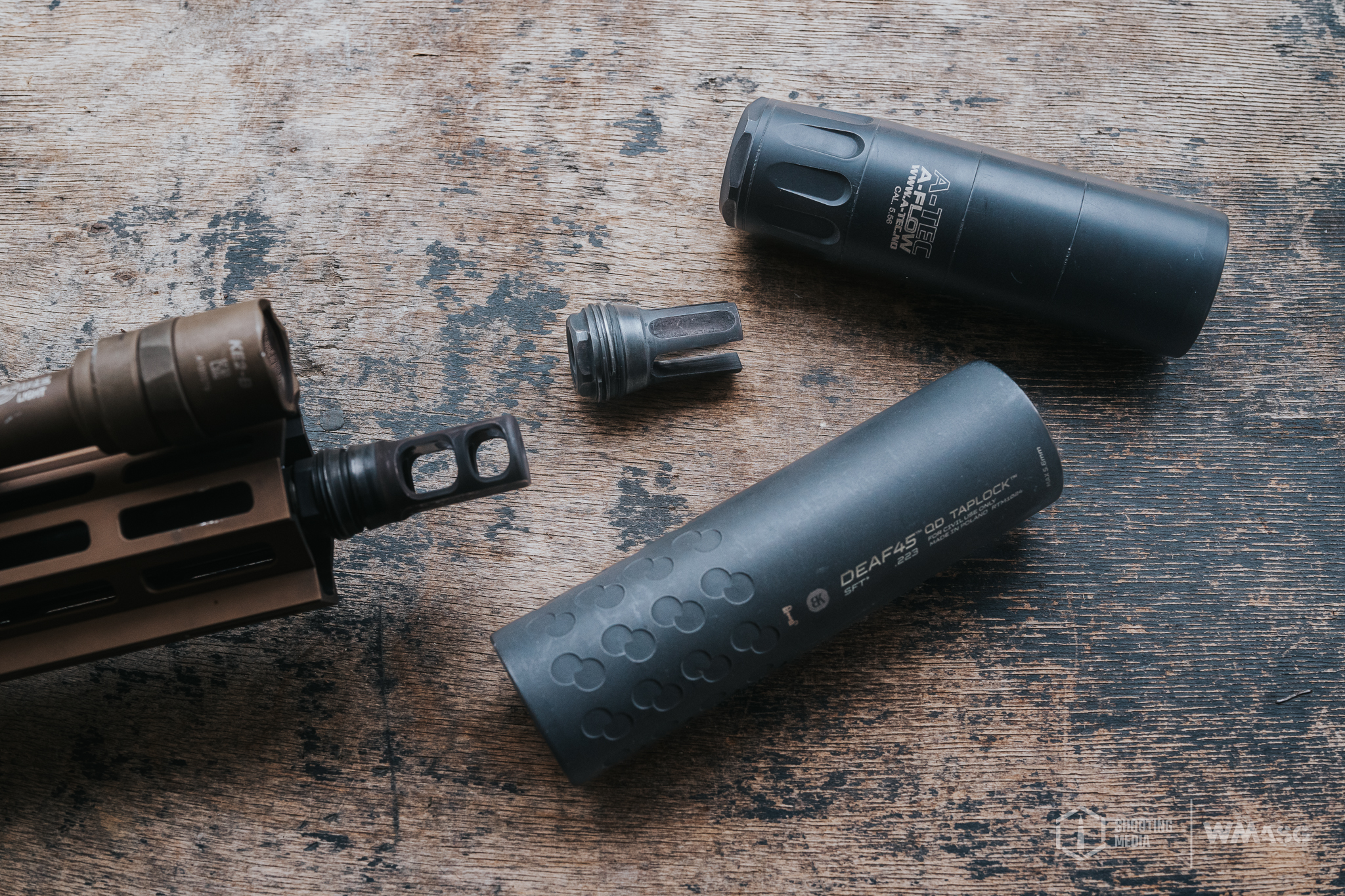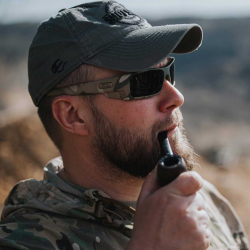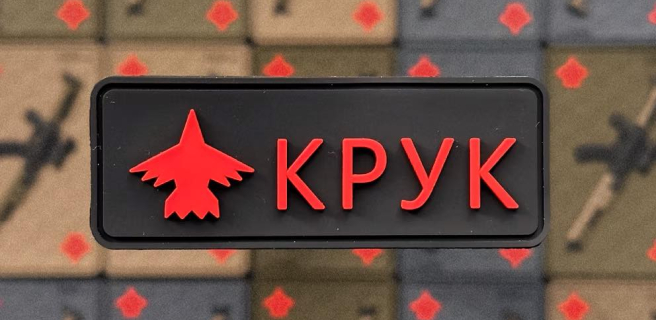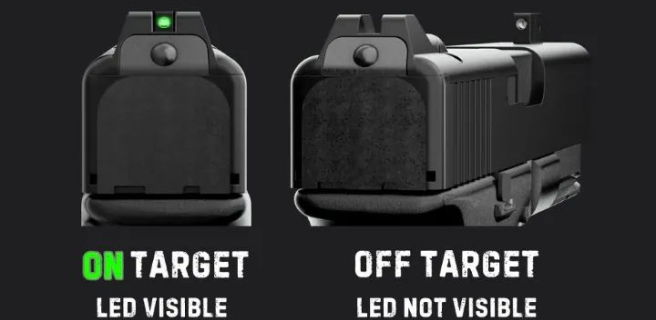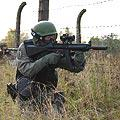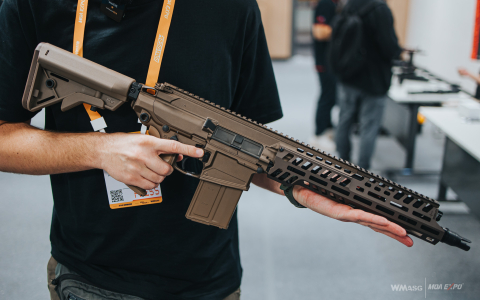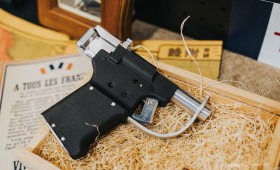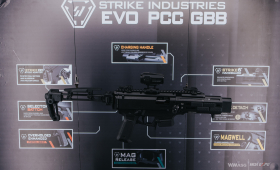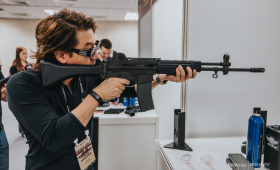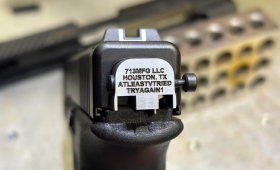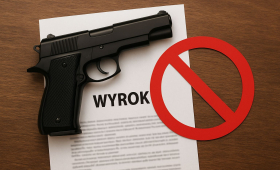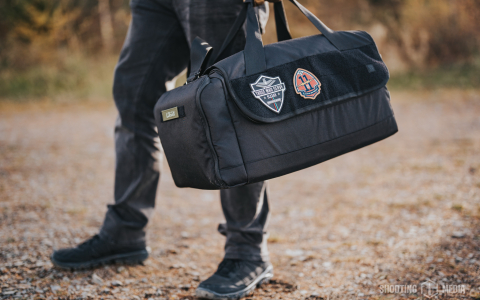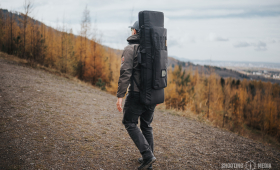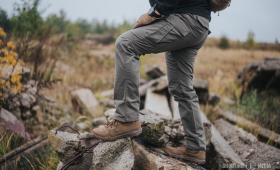Until not so long ago, as a sports shooter, having a suppressor, let alone saying that you have one, was unthinkable. There were discussions on forums and groups about whether it was allowed or not, along with resistance mixed with the cries of the "good old times" fan club. In the meantime, suppressors became part of the shooting standard, and in many competitions, they became a requirement (e.g., the iconic Light Infantry). Shooting with a suppressed firearm is significantly less disturbing to the surrounding area and fellow shooters. No one pretends anymore that a suppressor is not a suppressor, although the official term "sound moderator" is still in use. One such sound moderator, which has gained recognition in the last few years, is the BK Precise DEAF45 suppressor – a product of the BK Precise Poland company from Białystok.
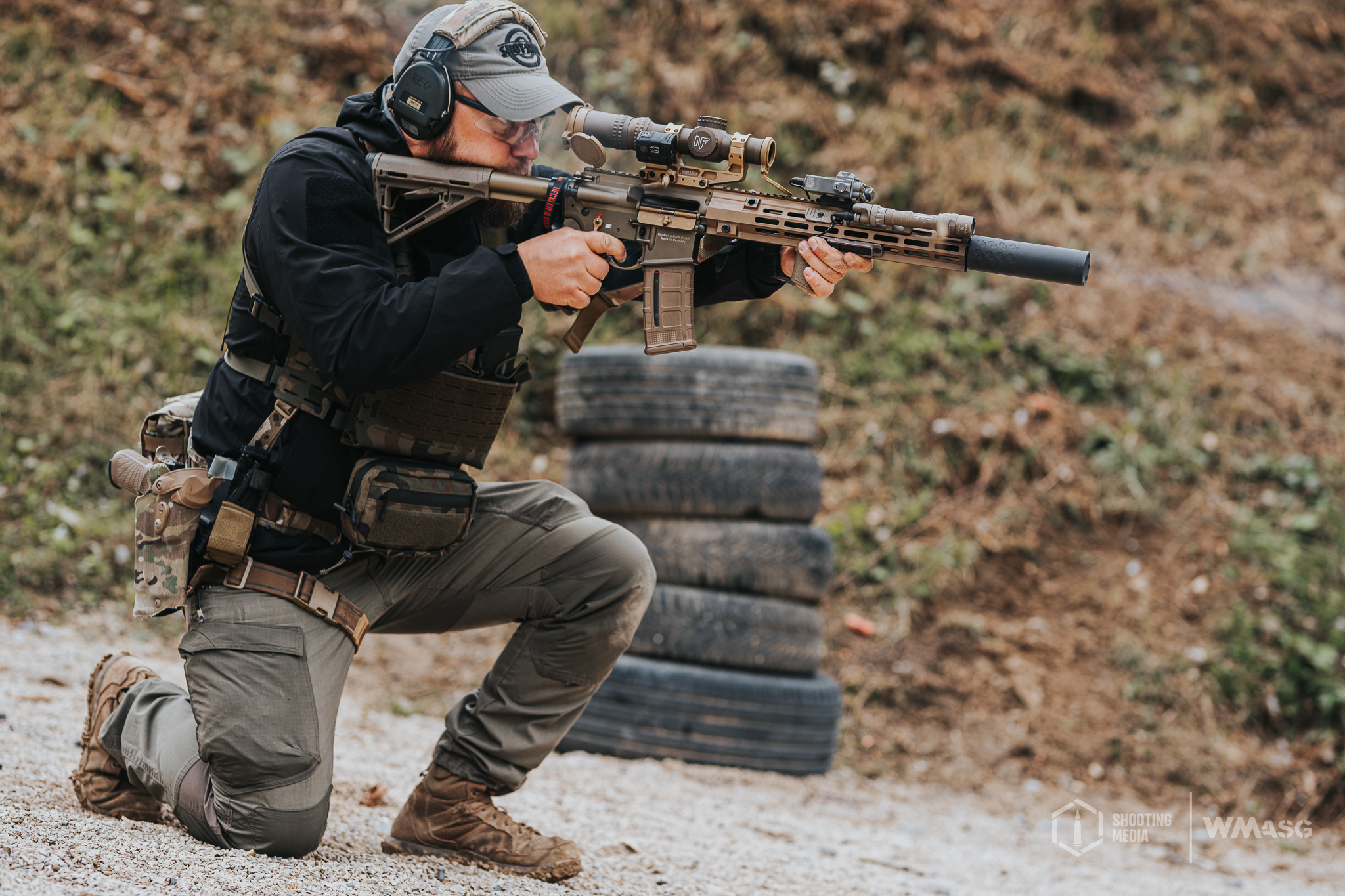
The BK Precise DEAF45 suppressor is a patented system muzzle device designed for semi-automatic rifles from the AR-15 family (or similar – my HK really liked it) chambered in .223Rem/5.56 mm, with a barrel length of 10 inches or more. It combines modern technology, solid construction, and a practical design, stemming from the shooting experience of the company's founder, Bartłomiej Kowalczyk. This will be a the review from a user after many months of use.
Steel and Titanium, Some Specifications
The DEAF45 is made from welded stainless steel alloyed with titanium. The suppressor is 150 mm long and 45 mm in diameter, with a factory weight of only 460 g. The center of gravity is shifted 75 mm from the mounting thread to minimize the impact on the firearm's balance. The surface of the suppressor is knurled for about half of its length to improve grip.
The suppressor is coated with a Cerakote ceramic coating, which protects it against corrosion and the acidic environment caused by propellant residues. Thanks to this coatings, the range of available colors is virtually unlimited, and as the manufacturer claims, any color is possible upon prior arrangement. On the product page, suppressors are available in the following ones: Blasted Stainless, Brass, Silver Brown, Silver Green, Magpul FDE, Black, Mil-Spec OD Green, Troy Coyote Tan, Pink, Pixel Camo, Tiger Stripes Camo, and what interests me the most, RAL8000.
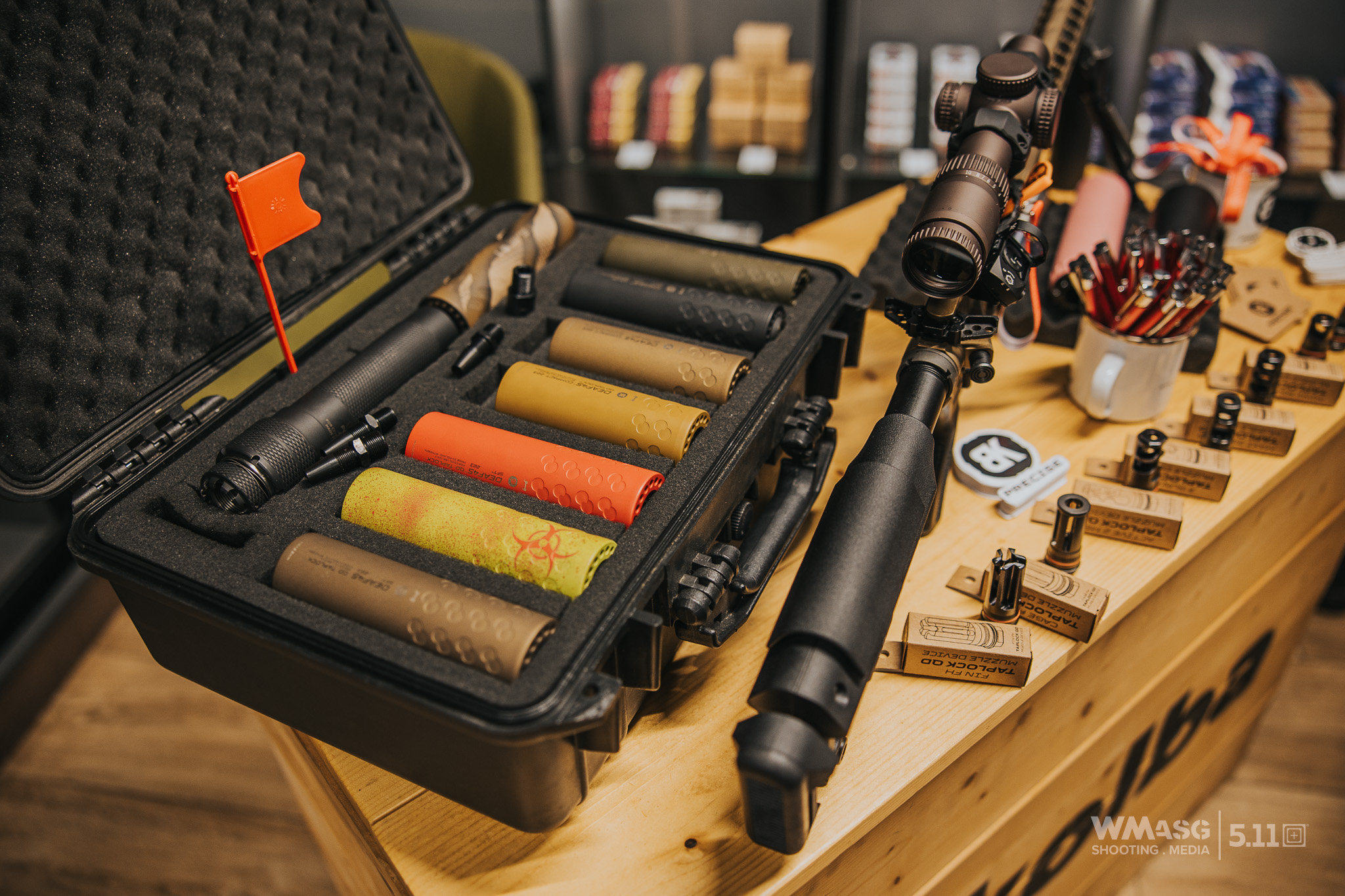
Additionally, the dedicated muzzle brake is coated with Tenifer, which increases resistance to wear and external conditions.
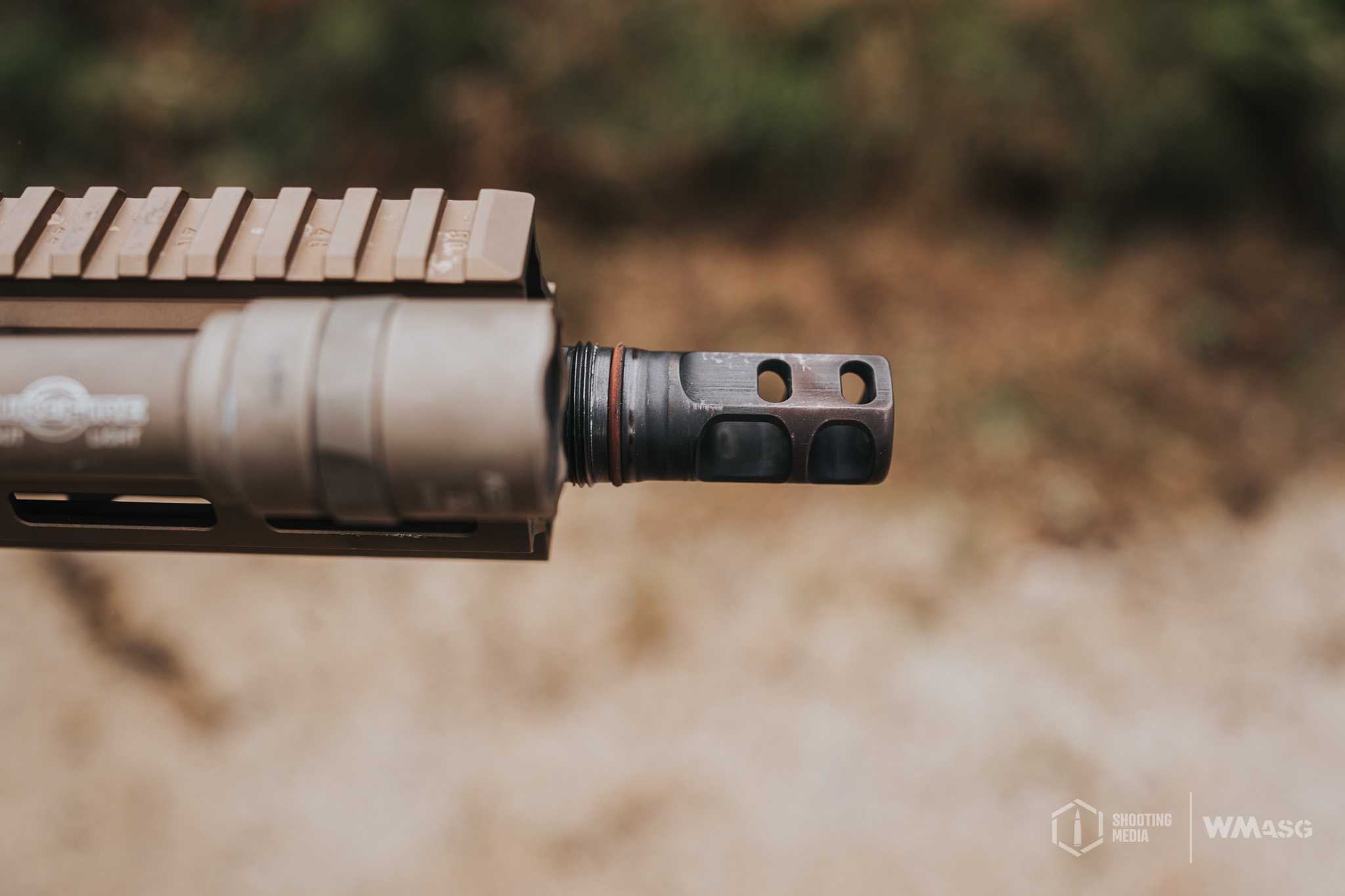
BK Precise 3GUN MB QD Taplock
The DEAF45 is designed for intensive use, as confirmed by the durability tests conducted by the manufacturer. A compressive force of 10 kN (about 1000 kg) did not cause any deformation of the housing, and a torque of 50 Nm did not damage the QD Taplock system. The muzzle brake, in gas erosion tests, showed minimal wear after 2000 shots. The housing also underwent thermal tests at temperatures ranging from -20°C to 600°C, simulating barrel overheating during long shooting sessions. In one of the manufacturer's tests, the suppressor successfully endured continuous firing of 500 shots in automatic mode (with a 10.5” barrel and 5.56x45 NATO ammunition). The maximum gas pressure inside the chambers was estimated to reach 3500 bars, corresponding to the peak values generated by standard NATO ammunition.
Features that Set the DEAF45 Apart
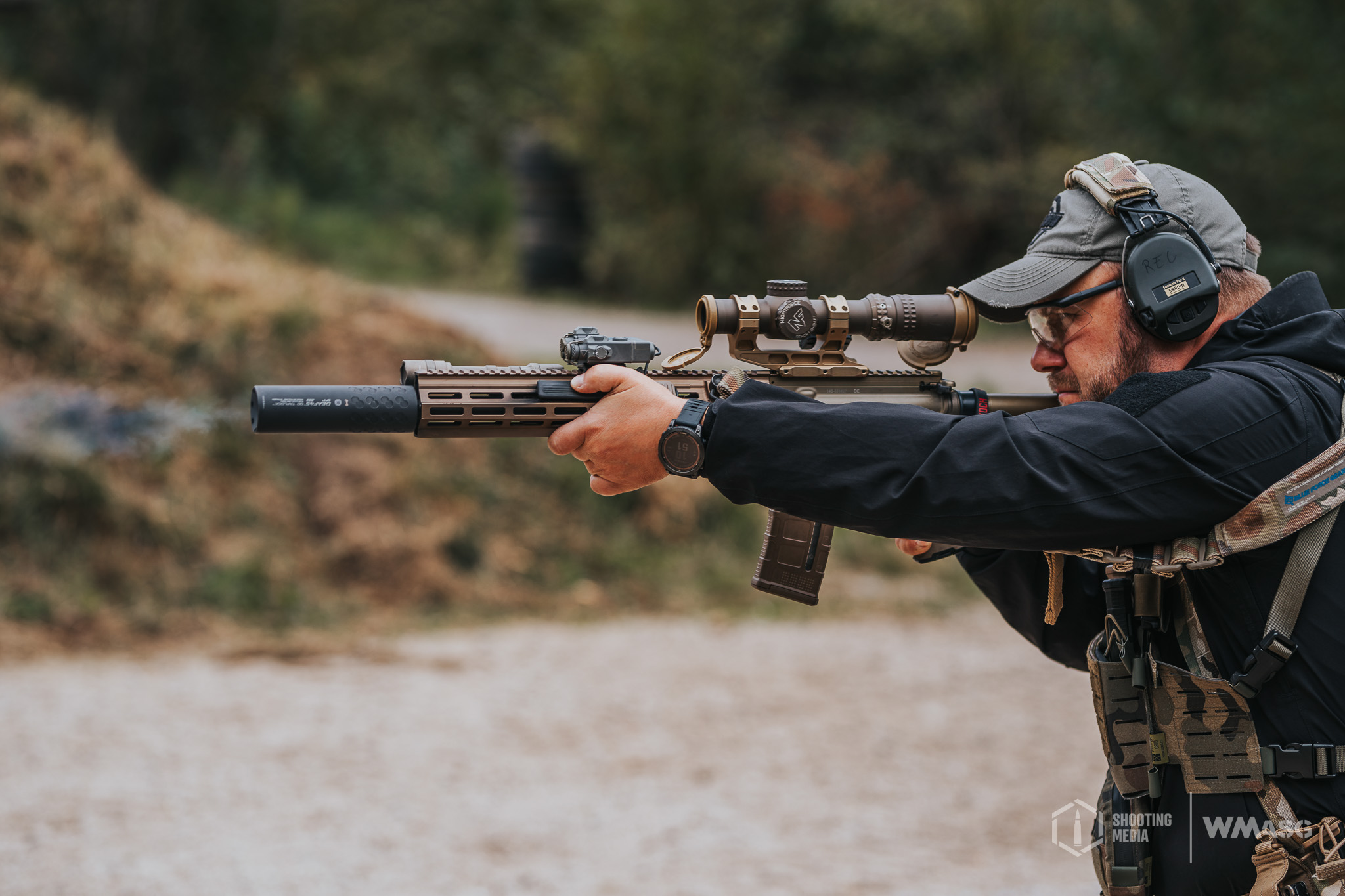
First of all, this suppressor was designed and manufactured in Poland. One of the key features of the DEAF45 is the patented Side Flow technology. Thanks to this, the propellant gases are directed to the sides and ultimately forward, minimizing the gas blowback towards the shooter (this doesn't mean that nothing comes back, but much less does). This not only increases user comfort but also helps to reduce the over-gassing of the firearm, extending its lifespan during intensive shooting with the suppressor attached.
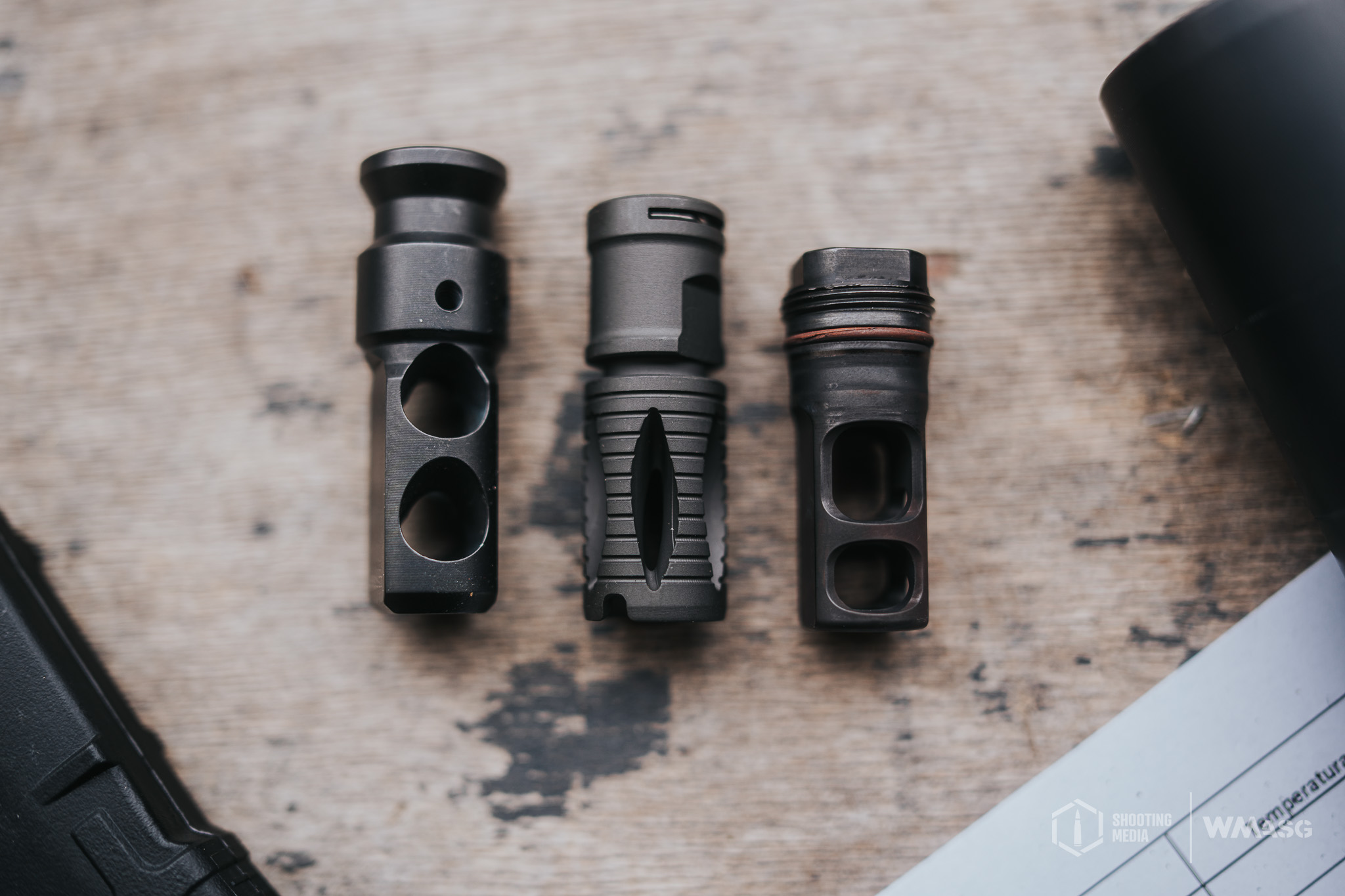
Cerber compensator, A2 Birdcage (fits HK MR223 from HK G36) and 3GUN MB QD Taplock muzzle brake
An undeniable advantage of the suppressor is the dedicated muzzle device in the manufacturer’s QD Taplock system, which serves as an efficient muzzle brake – the 3GUN MBQD Taplock (BK Precise also offers other devices in this system). The plug-and-play system allows for quick attachment and detachment of the suppressor. In practice, it is attached by making 5 full turns on the thread on the muzzle brake. With this combo, the DEAF45 offers recoil and muzzle rise reduction by about 30%, translating into excellent control over the firearm during rapid fire. Moreover, after removing the suppressor, the control remains at a very high level.
Does the Suppressor Suppress, or How Quiet is the DEAF45?
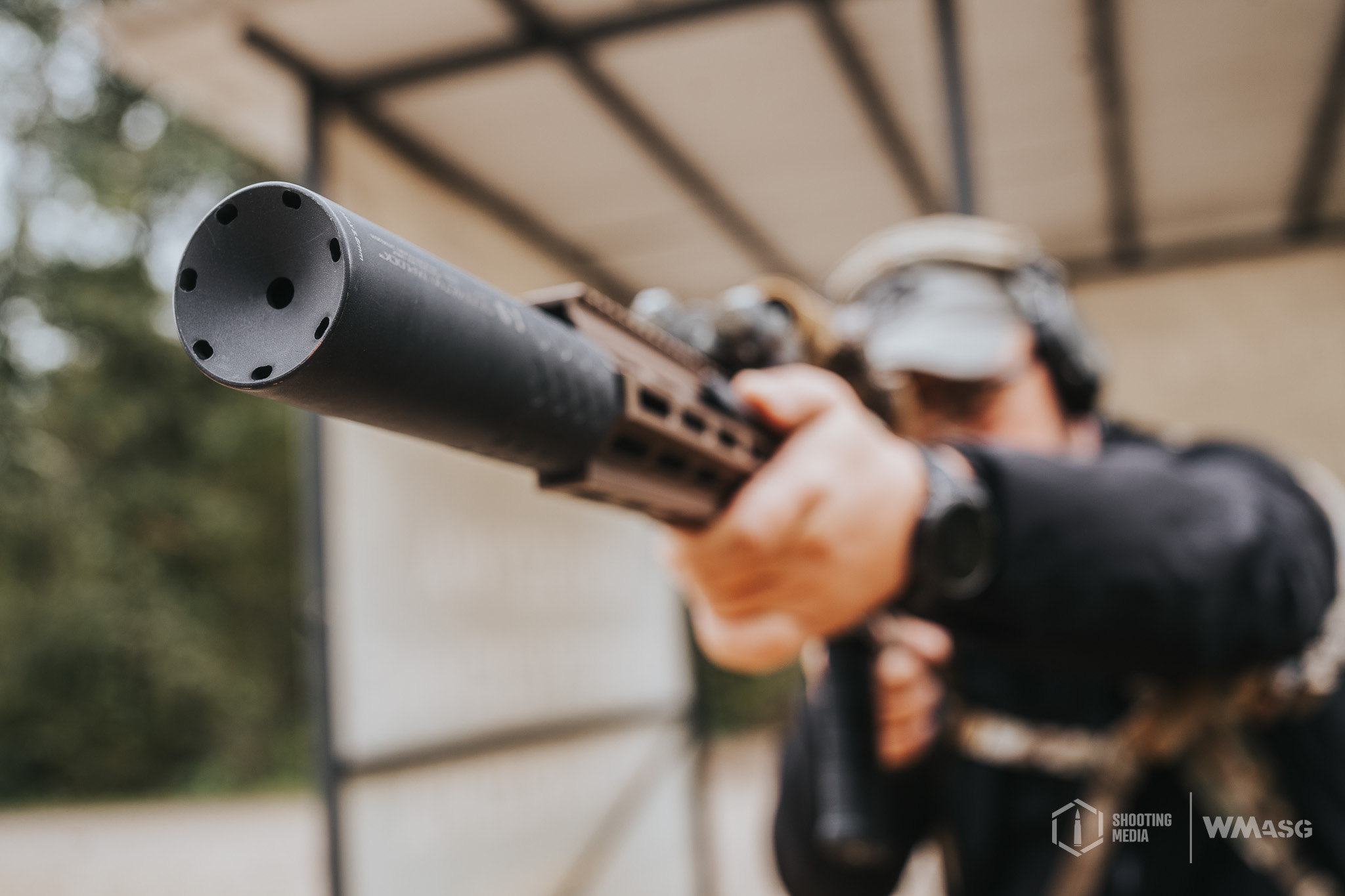
According to the manufacturer's data, the suppressor reduces noise by about 22-27 dB (depending on the barrel length), placing it in the middle range of suppressor effectiveness for this caliber, but still making it an effective hearing protection tool. In standard acoustic tests (from the manufacturer, unfortunately we didn’t have the opportunity to check it ourselves), the peak sound pressure level was reduced from around 160-165 dB (typical for an AR-15 with a 16" barrel) to the range of 133-138 dB. The Side Flow system, by diverting approximately 60-70% of the gases to the sides, reduces pressure along the barrel axis by as much as 40%, significantly changing the tonal character of the shot.
Usage
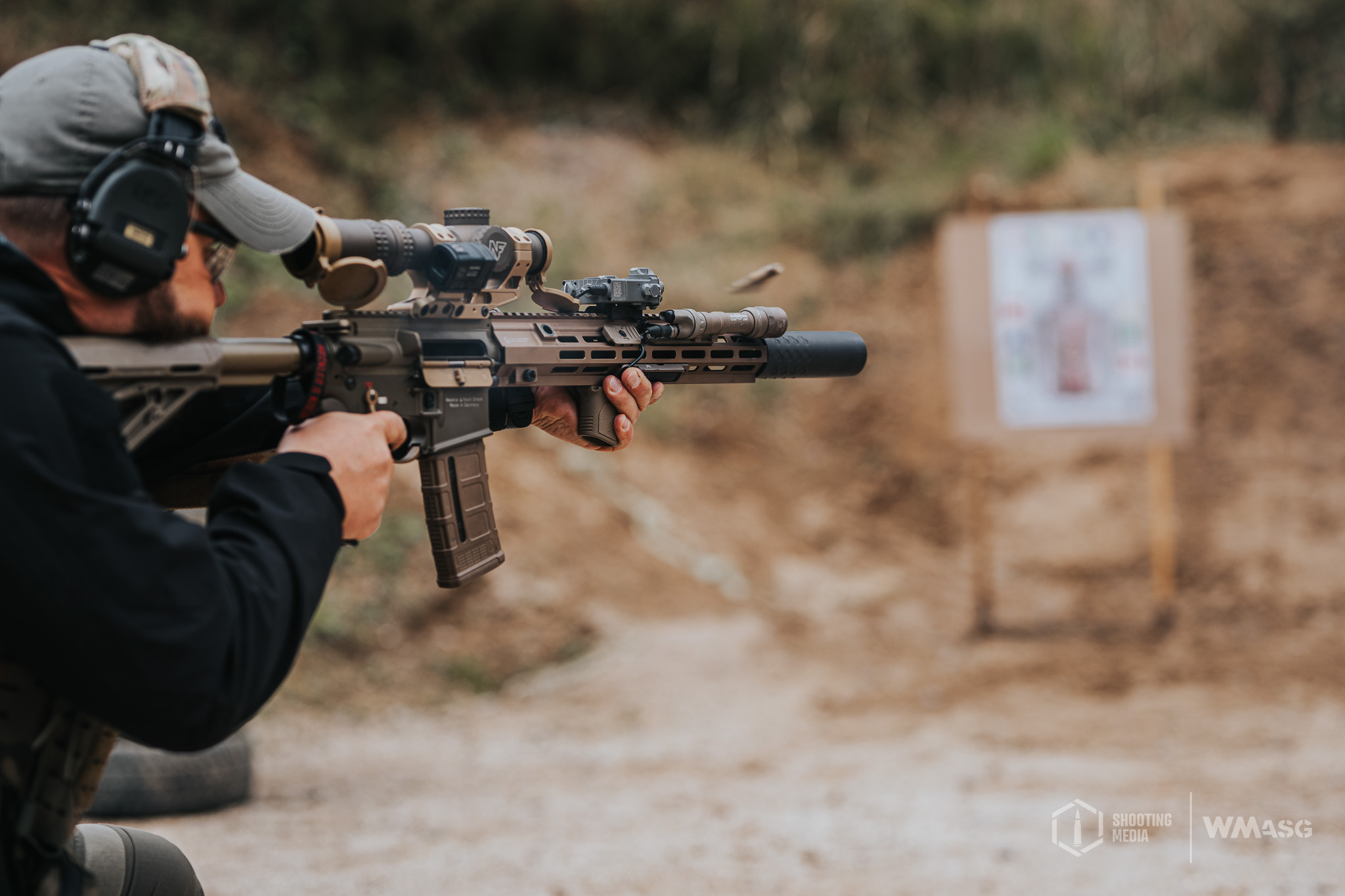
That's enough theory, but how does it work in practice? I’ve had the suppressor for quite some time now. I’ve shot with it at varying intensities, with different types of ammunition, and in different weather conditions. What interested me, as a user, was primarily how it affects the balance of my HK rifle, which barrel (in my case, 14.5’’) is, as you know, not the lightest, and how the shooting conditions with and without the suppressor are as similar as possible (both in terms of control and point of impact). I assumed that the suppressor's sound-damping properties would roughly match the market standard for such a suppressor.
However, the first thing that caught my attention was the sound of the shot. While shooting and standing next to the rifle, to some extent, especially with less intense shooting, hearing protection isn’t very necessary. Of course, it’s needed in theory, but in practice, the shot sound is not “painful.” The second advantage is its effect on the point of impact, which, in my opinion, is negligible compared to shooting with and without a suppressor. I recently heard the thesis that a suppressor, when mounted each time differently, alters the point of impact and therefore it should never be removed once mounted. Perhaps this is true for precision target and long-range shooting, which I cannot confirm myself, as I don’t shoot this way. My observation is based on shooting at gong targets at a ranges of up to 600 meters. My rifle is based on a military design, which according to the American standard, should maintain a grouping between 3 and 5 MOA at 100 yards (91 m), meaning the group should fit between 8 cm and 13 cm. For the purposes of this review, I checked how it looks on my target, and the DEAF45 only slightly affects elevation, regardless of how many times it has been mounted and removed. In my case, at 200 meters, it was around 0.5 MIL, or 1 cm of drop compared to the point of impact without the suppressor, using 68 gr ammunition. This does matter in target shooting, especially at longer ranges, but for shooting at gongs, it’s negligible, and you only need to remember to make a small correction. That’s why I like shooting at gongs (and because of the “clang”).
BK Precise DEAF45 and my current ATEC A-Flow 2+1
The tested suppressor came to me already with around a 1000 shots fired, and I added another 1500 or so. The weight, compared to the manufacturer’s specifications, increased by 7 g, making it 467 g, and the total weight with the dedicated muzzle brake is 533 g. Is that a lot? I don’t know! But I think it’s a decent result. The suppressor's mass with the dedicated muzzle device is over 120 g lighter than the comparable product from foreign competition that I previously owned. The weapon balance with the DEAF45 suppressor remains unchanged, and compared to my previous suppressor, the rifle noticeably does not tend to tip forward as much.
During shooting, the DEAF45 heats up relatively slowly (compared to another suppressor from a leading manufacturer that I own) and also cools down fairly decently - after moderately intense shooting, you can already handle it with a tactical glove. However, I’m adding this as a very subjective observation because everything depends on the intensity of the fire and the ambient temperature. In any case, I won’t be giving up a thermal cover, because it still eventually heats up like any other suppressor, meaning at some point, it will become very hot.
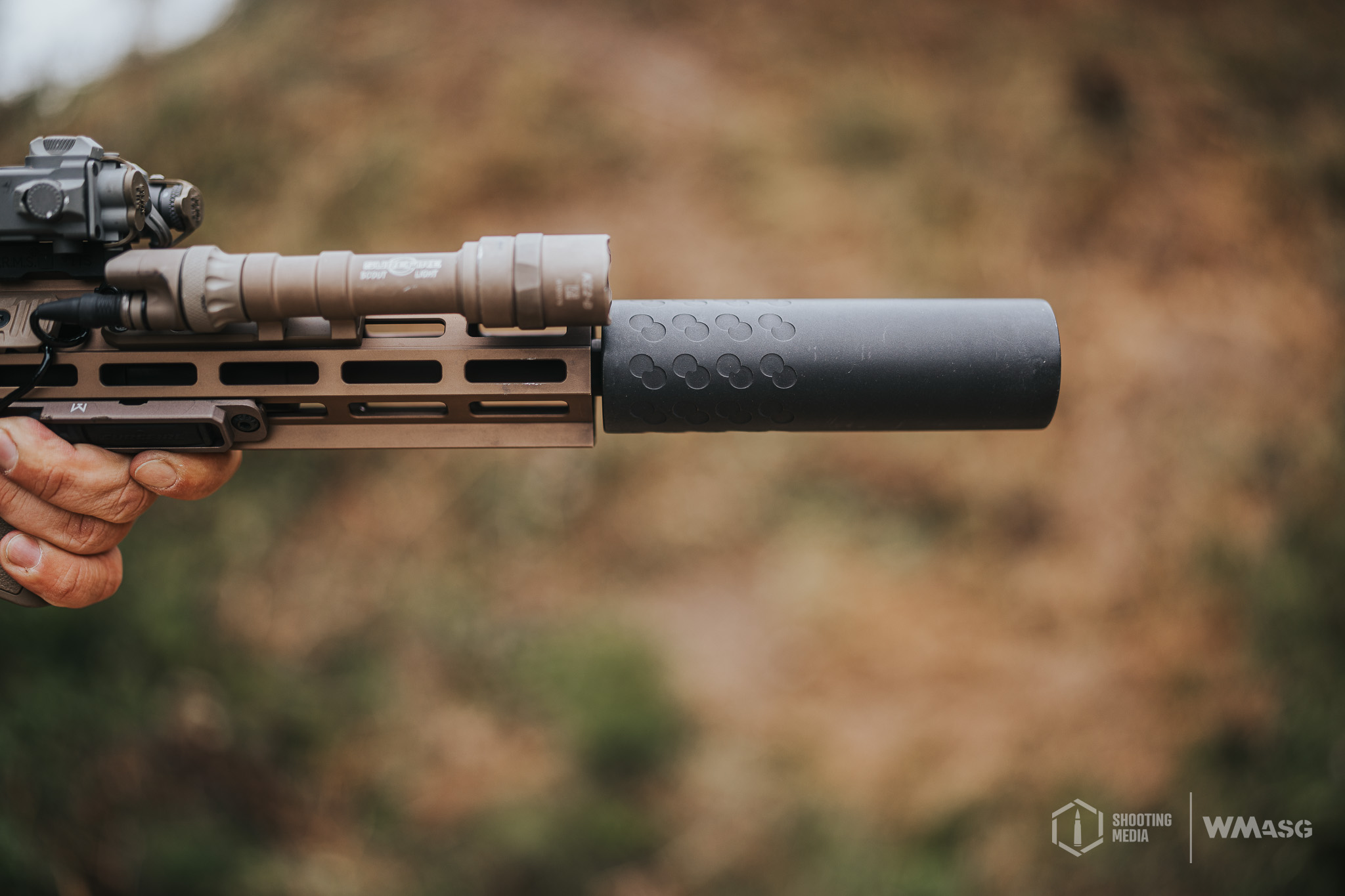
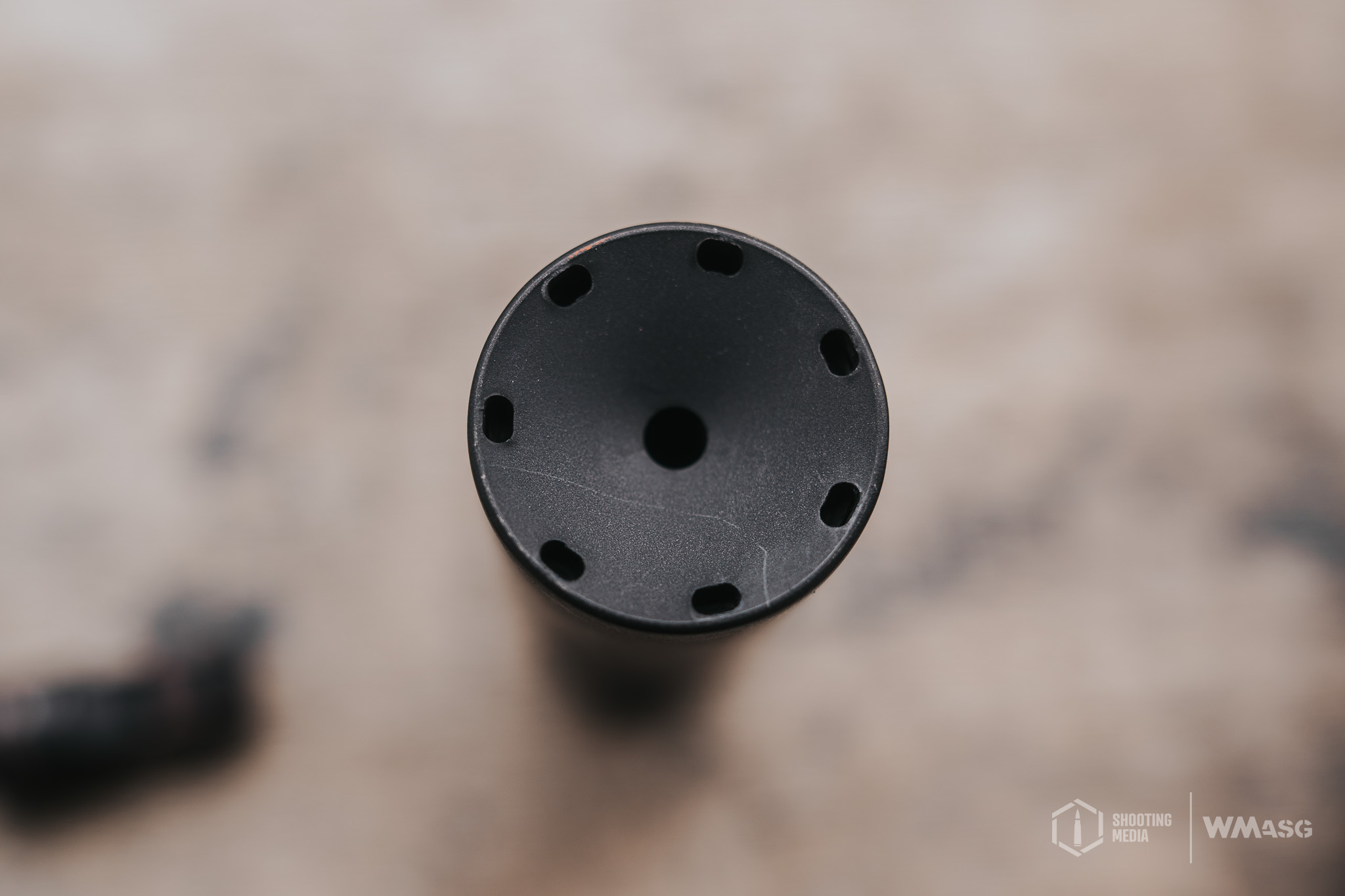
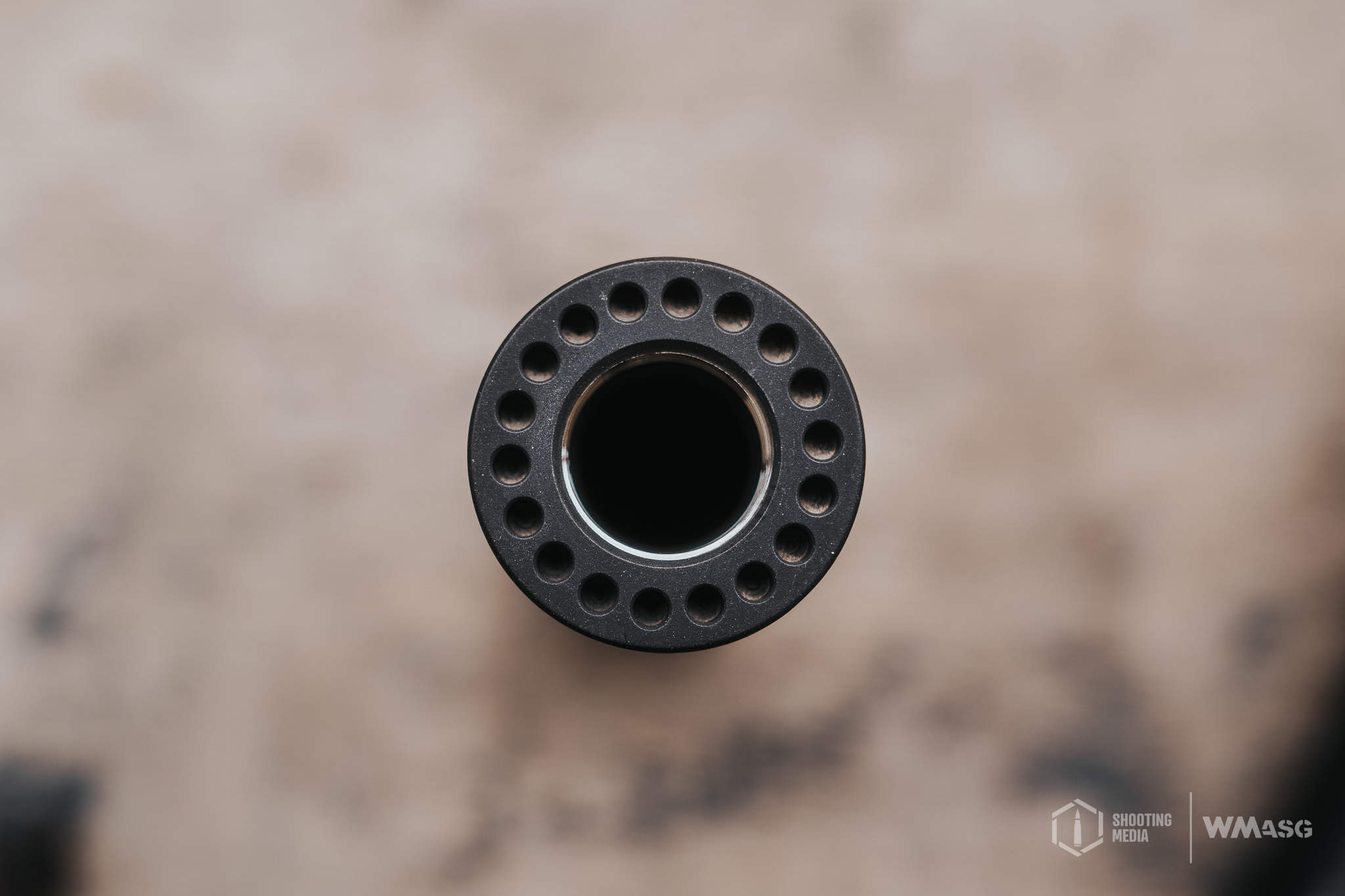
QD Taplock is a simple system that relies on conveniently screwing the suppressor onto the system thread on the muzzle device. I’ve never had trouble mounting it crookedly or not fully, which could be important in a dynamic and stressful situation.
It’s worth noting the dedicated 3GUN MB muzzle brake, which perfectly stabilizes the weapon during shooting and doesn’t bother those standing next to you, as it doesn’t generate a large blast to the sides. To correctly level it on the barrel, I received a few ring spacers, but they are available separately for purchase. The “whistle” is available in five versions for different barrel thread types.
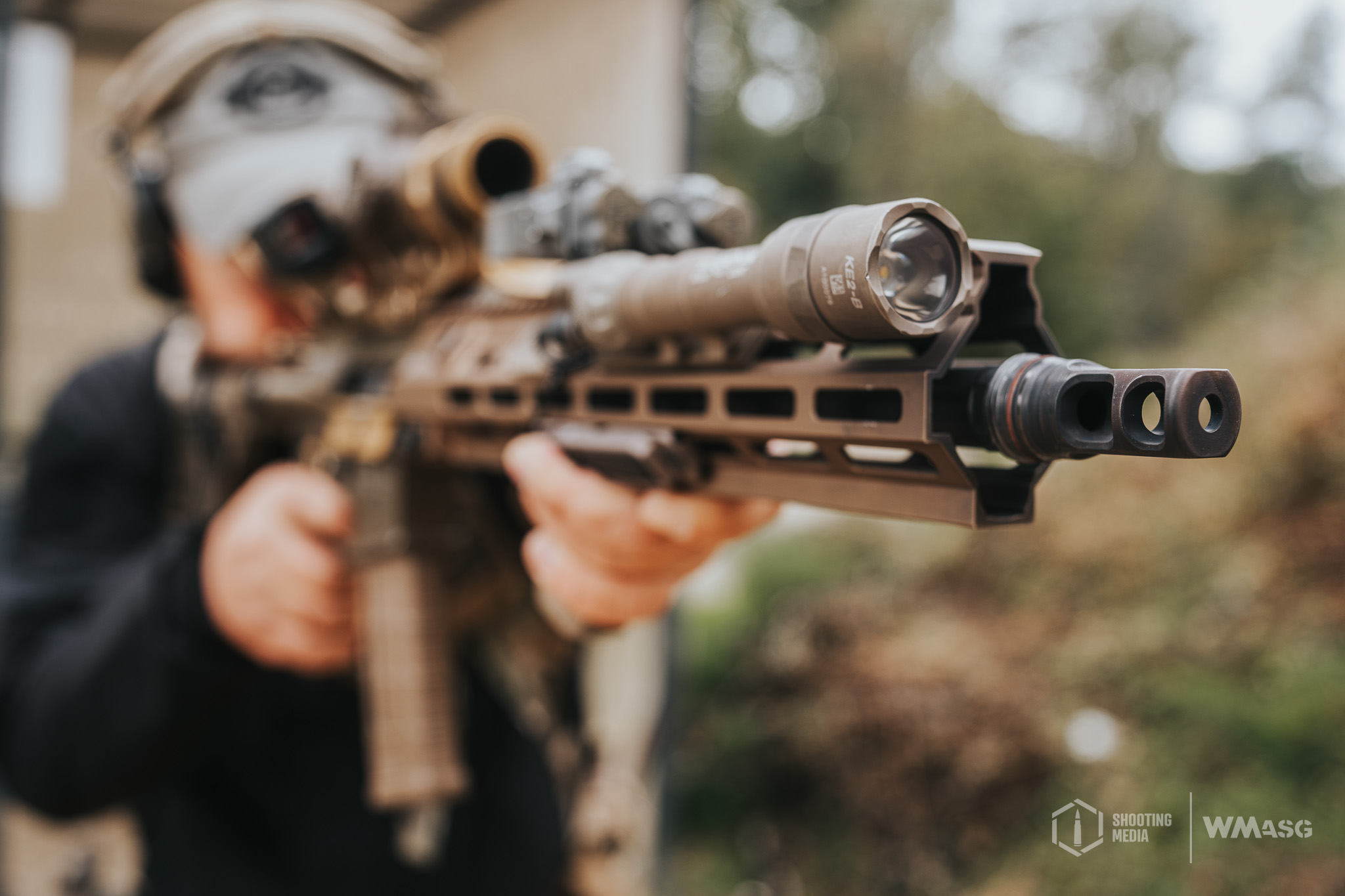
The BK Precise DEAF45 is definitely a suppressor worth considering. Its price, compared to what you get, is attractive, and it should serve an average shooter well for a long time. It will perform well in 3Gun competitions and other dynamic shooting disciplines, where high intensity of fire is common, and more control over it is recommended. BK Precise muzzle devices are increasingly available in stores across Poland, which also reflects the growing recognition of this brand.
This text was created as part of a sponsored collaboration with BK Precise. As always, we made sure the above article provides reliable information, and the advertiser never has any influence on its content. We’ve followed this rule consistently since 2001! The article presents the author’s assessment and does not close the topic for discussion, which we invite you to in the comments.
Photos: SHOOTING MEDIA (Paweł Cięcielowski)

